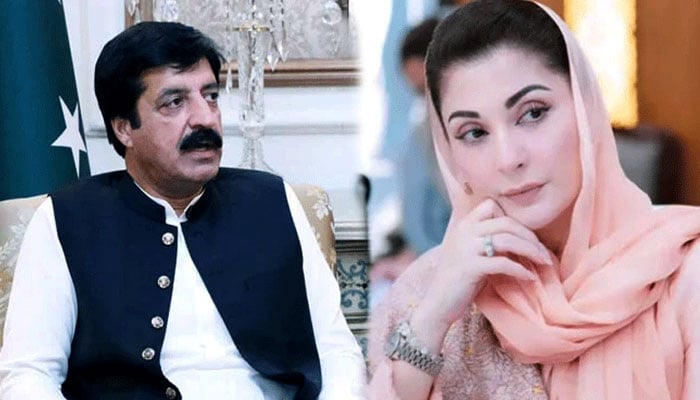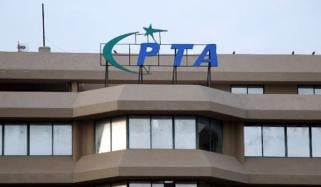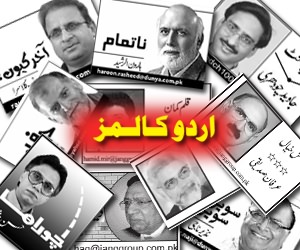The making of Mzansi, the making of South Africa's future?
Posted By: Abid on 20-11-2018 | 01:04:54Category: Political Videos, NewsWhen it comes to picking through the considerable debris in South African cricket, and working out whether the Mzansi Super League will have been worth it all, it is difficult to know where to start.
After all, this is a saga that has generated largely unwanted headlines for the better part of two years, cost more than R200 million before a ball has even been bowled, created ructions and distrust with the player base, led to the departure of a chief executive, left a group of foreign owners feeling screwed over, and seen no fewer than four broadcast rights partners engaged and in some cases paid off. It is some list.
And yet to untangle this long and messy ball of wool, we need to go back further. When viewed holistically, the story of South Africa's journey towards a revamped Twenty20 league starts in 2009 when it hosted the Indian Premier League.
On the face of it, the success of that tournament should have served as a launching pad for Cricket South Africa, coming just two years after it hosted the inaugural World Twenty20 that catapulted the shortest format into the public imagination. Conditions were perfect for CSA to ramp up their own competition.
But over the next three years the organisation became paralysed. An audit discovered that bonuses worth R4.7m had been paid to chief executive Gerald Majola and other CSA staff as a reward for their work during the IPL, but had not been declared to a remunerations committee.
As Majola dug in his heels and CSA kept any form of independent inquiry at arm's length, the organisation became stricken by a power battle. By the time the Nicholson report signalled an end to the saga in 2012 and the corridors were mopped after much bloodletting, Cricket Australia had the Big Bash League up and running. It would take CSA several more years to get its house in order.
If the past two years in South African cricket have been especially chaotic, then, a quick glance back in time shows that they were merely part of a pattern of mismanagement. The country's ability to produce enough players of exceptional talent to maintain a strong national team does a good job of masking this. But the fact that those in charge at CSA have been motivated more by self interest than a sense of selfless duty or responsibility is borne out by their handling of the new league.
A considerable amount of money has been lost amidst what CSA itself called "pervasive governance lapses", but not a single board member or administrative figure has resigned. If anything the opposite has happened.
Thabang Moroe, who failed to attend meetings of the T20 Global League subcommittee that should have kept the tournament on track, was appointed as the new CEO this year despite his part in the scandal.
Along the way, the tournament's nature has shifted - back and forth between a model with private franchise owners and one that is centralised; an equity partnership with SuperSport one month, a private venture that completely excludes the broadcaster the next. All of which suggests that the new tournament has been driven more by the egotistical desires of individual administrators to attach their name to a competition than a calm and level-headed evaluation of market forces.
*****
While Cricket Australia's recent disintegration has laid bare the danger of cricket bodies morphing from public benefit organisations into uber corporations, their handling of the Big Bash has provided some guidelines on how to utilise the Twenty20 vehicle. Recognising that they needed to re-energise cricket in the country, CA focused on attracting new fans to the sport rather than preaching to the converted.
As CSA looked to conceptualise a new league, there were several inter-related issues in South African cricket that it needed to address: finance, transformation, the global shift in cricket's markets and its relationship with local satellite broadcaster SuperSport.
When the T20GL model was drawn up in 2016 and early 2017, the priority was to create a new revenue stream that was both consistent and within CSA's control. As the fallout with the BCCI in 2013 had explicitly shown, CSA were beholden to the whims of their more powerful counterparts, because the vast majority of their income outside of ICC distributions came from tours by India, Australia and England.
Years in between those visits would be characterised by huge losses, and CSA's vulnerability was laid bare when India's 2013 tour was cut by seven matches, costing the organisation as much as R200m.
Furthermore, CSA needed to safeguard themselves against the radical shift that is underway in cricket from an international-based game to one dominated by the T20 leagues.
"The reason South Africa needs a successful T20 league is because the cricket revenue model is going to flip between international and T20 leagues," says Lorgat, who was the main driver behind the T20GL prior to his sudden departure as CSA chief executive last year.
"In 2010 while I was at the ICC we were already discussing the changing landscape and realising the need to make international cricket more attractive. We needed a Test championship and a proper ODI league to provide context for fans. In my view this has taken too long to introduce.
"This country must have a league because in due course - whether it's this year, next year or five years down the line - the model will flip and you're not going to make money out of international cricket; you're going to generate revenue out of the T20 franchise leagues."
When Lorgat joined CSA in 2013, the organisation instigated a three-year plan to fix what was broken before a new league was launched. Affiliates were forced to be more accountable to CSA, who tightened up their own structures. Lorgat says that the process left CSA with more than a billion rand in cash reserves, and at the beginning of 2016 the journey towards a new T20 league began. With other leagues springing up around the world each year, CSA set the target of getting their own competition up and running by the end of 2017. It didn't leave much time.
In amongst this was the constant question of how to transform the sport, since this played a part in CSA's battle to make money at home. Because of the slow pace of transformation over the past two and a half decades, the cricket watching public remained relatively small. To change this, the game needed to gain a bigger foothold among the 43 million black South Africans who make up three-quarters of the country's population. Doing so would help CSA become less reliant on foreign broadcast rights.
A related issue was that when it came to seeking broadcast rights domestically, SuperSport were the only bidder in the market. This was inextricably linked with the transformation factor, because SuperSport's cricket coverage is held on its most expensive bouquet - one that is beyond the means of most black South Africans, who can instead pay half as much for a package that includes both local and international soccer. While home internationals are also broadcast on SABC 3 - a free-to-air, government-run channel - cricket's visibility outside of the summer season is minimal.
CSA were caught in a Catch-22 scenario then, where they needed to transform the game to generate more money, but also needed money to transform the game.

The T20GL model effectively decided that money was the horse which would pull the transformation cart behind it. In order to safeguard income and mitigate its own financial risk, CSA invited third party ownership of eight franchises. The franchise fee for the four teams in the biggest cities - Johannesburg, Pretoria, Cape Town and Durban - was set at USD 5 million per year, while the smaller centres cost $3m. In total, CSA would reap $32m per year.
In return, the owners would share 80 per cent of the broadcast rights. CSA would use the other 20 per cent as well as the money from the title and other central sponsorship to run the league, allowing the $32m to go towards development. The model meant that CSA could theoretically make a profit from year one, with the owners shouldering the bulk of the uncertainty.
"You had to build a league model that worked for the broadcaster, the sponsors, the league, the team owners and the players. The team owners were aware and ready to invest in the early years and, in fact, they are doing so right now in other leagues around the world. They know how the model works. I personally know many of them who are investing huge amounts of their own money and they are fine with that," says Lorgat.
"In our model, if in the early years the media rights revenue was not sufficient to make it work for the owners, we would have contributed if necessary. Practically, this would mean we take some money out of the pot of $32m license fees earned by CSA to support the owners' 80 per cent share of media rights. For example, say we raised $10m instead of $20m in year one for media rights, we would have subsidised, say, $10m from the license fees earned by CSA so that the owners can make their operations work."
Things never got that far. As the tournament drew nearer and concrete broadcast deals remained elusive, a sense of unease crept in. Of particular concern was the situation with SuperSport. CSA believed that the broadcaster had paid more than $10m to show the IPL, and that a local tournament was worth at least as much to them. But SuperSport balked at the demand for $10m, offering a little more than half that amount - with some of that money essentially coming from scrapping the existing T20 tournament to which they had already bought the rights.
In these delicate negotiations, the quality of relationships was crucial. It was widely acknowledged that Imtiaz Patel, the head of Multichoice, SuperSport's parent body, did not see eye-to-eye with Lorgat. Whatever the cause - and Lorgat denies that it goes back more than a decade to when both men were in the running for the ICC post - a healthy deal with SuperSport was crucial to the T20GL getting off the ground.
Almost as important was gaining a foothold in India, but again there were personal dynamics at play. CSA opted not to use IMG, their usual media rights partner, instead appointing Lagardere before giving the account to Venu Nair when he left Lagardere to establish his own company, Ortus. Nair's relationship with Indian broadcasters was strained, leaving Lorgat to do CSA's bidding in that territory. He maintains that deals were in the pipeline before he parted ways with CSA on Wednesday September 27 - just six weeks before the T20GL was due to begin.
"We were far advanced with most broadcasters, including Sky UK," says Lorgat. "On the Monday before I left CSA, I was sitting in the Mumbai office of the chief executive of Star Sports negotiating the T20GL media rights for the sub-continent. He had promised to revert with an offer before the end of that week. Obviously that never happened because by the end of Wednesday I had departed from CSA. While England and India were the two big external markets we were focused on, we were also busy finalising deals in other parts of the world. More than that we were also working on unlocking a global digital strategy with the likes of Google, Apple and others who were also interested in our content."
Lorgat says he is unable to discuss the specifics of his departure, and the role that the T20GL played in it, citing the terms of his separation agreement with CSA. But he says that even after the split he expected the tournament to go ahead. A back-up plan was to broadcast the tournament on the SABC in year one, with CSA and the owners carrying their own costs.
Having sought so much responsibility for setting it up, at least some of the responsibility for its failure must fall on Lorgat's head. On the surface level, it was clear that he was juggling too many balls, and his inability to conclude broadcast deals in the time available took its toll. While his knowledge of the cricket landscape was not in question, some of the softer skills were perhaps missing and ultimately he alienated too many people.
The fallout with CSA's chief financial officer Naasei Appiah created a division within the organisation that became clear on the morning after Lorgat's departure. When the news was shared with one CSA staffer who had yet to hear it, it elicited an excited response and the telling comment: "So Naasei has won."
But what of the board who oversaw the whole affair? Moroe would later insist that they had not been kept appraised of developments, but he was part of a subcommittee - along with independent directors Louis von Zeuner and Iqbal Khan - that was tasked with meeting Lorgat and keeping the board in the loop.
The Nicholson report that came out of the Majola saga recommended the induction of independent board members who could see through the incessant petty factionalism in South African cricket and work for the good of the game. Having failed in this duty last year, Von Zeuner and Khan remain part of the CSA board that has sanctioned this year's tournament.
CSA have spent the last 12 months shifting their pieces around the chess board in an attempt to improve their model. What they have arrived at looks less than convincing.
*****
For starters, the Mzansi Super League is hardly different to the existing franchise structure that South Africa's cricket fans spend the majority of summer ignoring. There are six teams, with only one departure from the regular franchise arrangement - Paarl will have a team and Bloemfontein will not.
With the teams largely being run as an extension of the normal franchises, coaches from the domestic game have been appointed to MSL teams in four out of six cases, meaning there will not be the influx of fresh ideas that the T20GL had promised by signing up the likes of Graeme Smith and Stephen Fleming.
A draft has reshuffled domestic players around the country and added some international flavour to the event, although the last-minute nature of this year's league means that many will be absent for part of the tournament due to commitments in competitions elsewhere.
With six squads of 16 rather than eight of 18, there are also 48 players fewer than were contracted for the T20GL. With international and Kolpak players taking up a portion of the 96 places, opportunities for up-and-coming domestic cricketers are scarce.
The reduction in ambition is related to the fact that CSA have taken on all of the financial risk with the MSL. Losses on the first season have already been forecast at R40 million, and Moroe has suggested that CSA might not see a profit until year five. The tournament is launching without a title sponsor and an 11th-hour deal with Sony is the only broadcast revenue of note, with the SABC given the local rights for free - an ironic twist given that this was seen as a worst-case scenario for the T20GL.
Despite the fact that the arrangement is clearly a last resort for the MSL after CSA's attempt to create an equity partnership with SuperSport failed, Moroe cites the fact that the tournament will be aired on SABC as a "watershed moment". In an email response to detailed questions about the league, he added: "It is worth mentioning that when Kagiso Rabada took his 13 wickets in the match against England in 2016 and Temba Bavuma scored his century in the same series, SABC's TV audience swelled to more than 10-million, a previously unheard of figure for SA cricket and this shows just what this tournament can do for transforming our business. It is not just about players; transformation covers many other areas, one of which, for example, is the sustainable business model we have introduced successfully for all our members."
While broadcast on the SABC is undoubtedly good for cricket, it leaves a slightly rotten smell given that the public broadcaster has unpaid bills and a significant list of creditors. This week SABC board chairperson Bongumusa Makhathini told parliament that the organisation needed a R3 billion injection, otherwise it would "collapse" by March.
The broadcaster's relationship with sport also looks increasingly schizophrenic - on the one hand they are showing a yet-to-begin T20 tournament, on the other they are unable to broadcast the national football team's African Nations Cup qualifier against Nigeria this weekend - a game of greater national interest and one that they are required by law to show.
The relationship between CSA and the SABC is therefore one of two compromised organisations looking to turn their fortunes around. Last week CSA told parliament's portfolio committee that they expect to lose R654m over the next four years - a figure that excludes any MSL losses. Increasingly it looks as if the tournament will make or break South African cricket in the long run.
All told, CSA's decision to run with the MSL model looks like an attempt to retain a South African identity.
Lorgat points out that aside from removing the financial uncertainty from CSA, the franchise owners would have taken responsibility for development work in South Africa in the same way that they do elsewhere.
A Lahore Qalandars development squad that was drawn from more than 500,000 prospective players across Pakistan won a T20 tournament in Abu Dhabi last month, bettering a vastly more experienced Titans side in the final. The plan was for the T20GL's owners to invest money into CSA's existing development initiatives as well as start their own.
But while the T20GL intended to channel money into transformation, it had an exclusive feel to it. CSA did not feel they could impose transformation requirements on the owners, and the tournament was generally outward looking. The MSL has taken the opposite view - selection targets will be imposed, tickets are cheap and the marketing has looked to invite a new crowd. Early indications are that the tournament has attracted significant grassroots interest.
Moroe says that while the league will remain "a proudly South African owned and developed product, we will keep the door open for foreign investors to come on board as associate partners at the appropriate time".
Asked what aspects of the MSL model make it better than the one proposed for the T20GL, he replied: "The key one is that this is a totally South African owned and controlled product which is in line with what has happened in other successful leagues such as the IPL and BBL."
The statement neglects the fact that even the IPL utilises private ownership, as well as the challenge of drawing sufficient revenue out of a South African economy that is currently in recession. Three major sponsors have walked away from CSA this year alone. By contrast, the cricket economies of India and Australia are robust.
From the outside looking in, it would appear that CSA are betting the house on transformation changing this - and doing it fast. Might they rue the flutter?

 PTI Protest today news...breaking news
PTI Protest today news...breaking news
 MNA Adil Bazai disqualified for floor crossing
MNA Adil Bazai disqualified for floor crossing
 Court approves 5-day physical remand of PTI founder
Court approves 5-day physical remand of PTI founder
 Islamabad High Court Case Update - Stopping Leader For Meeting With Imran Khan
Islamabad High Court Case Update - Stopping Leader For Meeting With Imran Khan
 Defeating the nefarious intentions of the enemy is top priority: Army Chief
Defeating the nefarious intentions of the enemy is top priority: Army Chief
 Chief Minister Maryam Nawaz has become king, I will not meet her now: Governor Punjab
Chief Minister Maryam Nawaz has become king, I will not meet her now: Governor Punjab











